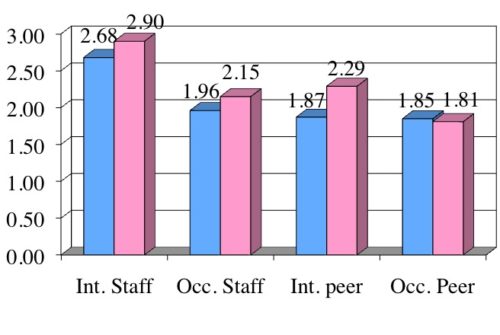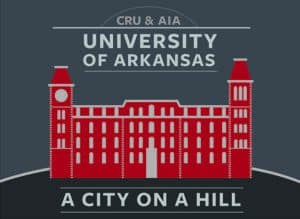
This is part of a series on Sending
Click to read the Intro and for a list of Cru’s Top Sending Campuses (with links to each post)
Sending Starts with Staff
From my research, one of the best ways to be a sending campus is to have a sending team. Not to just have one person on the team who is passionate for the world or is a Global Missions coordinator. But to have an entire team that is passionate about raising up laborers to go to the world.
How do you create that?
You need to put just as much thought into recruiting your staff as you do recruiting your students. Your staff need to be aligned to the needs of the world and the need to Send. If your team really believes in Sending, sending students will naturally happen.
A Team of Once and Future STINTers
The surest way to have a sending team is for it to be made up of once and future STINT’ers (a STINT is a one to two year internship; or for staff, a one or two year service overseas). Send students on STINT and many will come back to your team. Don’t have any ex-STINTers on your team? Send your current staff on STINT. Sure you’ll miss them. But the benefits are tremendous –
- They will go and hopefully take tons of graduating students with them on STINT
- They will come back with a passion for the immense needs of the world (and will likely be better leaders)
A Team of Go-ers – “Come With Me!”
The next best thing to STINT (and slightly less daunting) is getting everyone on your team to your partnership countries.
On our campus, we want every staff/intern to go to one of our partnership countries in their first 2 years on the team (either on a 10 day Vision Trip or Summer Mission).
We also want to set a norm on our team that most staff will go on one of our three Summer Missions partnerships EVERY summer:
- East Asia
- Ethiopia
- San Diego
Our staff are actively seeking to lead our Summer Missions partnerships (both internationally and stateside).
“Come with me” is far more powerful than “you should go”. We’ve noticed a HUGE difference in the number of students who will go if we have our staff or key students leading a project (vs when they are being led by other campuses’ staff). HUGE.
Incidentally, your team is going to need to raise some individual support. It’s going to cost them money to lead Vision Trips and Summer Missions. Build MPD into your team’s schedule. Cast vision for how healthy support enables your team to make decisions based not on “how much is that going to cost?” but “what is the best use of my life for the sake of the gospel?”
A Learning Team
Constantly keep the needs of the world in front of your team by having a weekly focus on Sending in your staff meeting:
Take advantage of technology:
- Regularly Skype your STINT’ers into your staff meeting
- Skype in visionary leaders who bleed for the world
- Skype in leaders from the Northeast or Northwest of the U.S. who can cast vision for the needs of those areas
Read together:
These are great to print out and read with your staff team. Because sending starts with staff.
- Read about two campuses that have excelled at creating a Sending Culture:
- Read a few of my posts on sending:
- The World’s Greatest Need – Laborers
- The Top 2 Barriers to Sending
- 11 Keys to Being a Sending Campus
- “Missionary Call” by Robert Speer
- “Mobilization – The Key to World Evangelization” by Steve Shadrach
- Help your team becomes pros in helping students make decisions and discern calling
- Read two chapters from Roger Hershey’s book The Finishers on calling and decision making
- Read the (short) book Just Do Something
- The Traveling Team has a whole page of articles on Sending
- Creating a Sending Culture – by the Wisconsin Cru Team
- Becoming a Cradle of Missionaries – Dan Allan
- Cru Red River Region’s Top 10 Best Practices for Recruiting – Compiled by Shawn McGrath and Meredith McNeese
- John Mott Article
- Discuss Mott article: Are you alarmed about the need for the Gospel to be taken to the entire world, and therefore for laborers to take it? How do you express that in your work with students/faculty?
- Discuss Mott article: Are you alarmed about the need for the Gospel to be taken to the entire world, and therefore for laborers to take it? How do you express that in your work with students/faculty?
Read and Discuss Passages of Scripture on Sending:
Work through this devotional together - The Antioch Movement in Acts by Brian McCollister
- Within 20 years Christianity had spread to Asia Minor and Europe
- The spread of the gospel can be traced clearly to the church at Antioch
- Church in Antioch likely founded by 35 AD — sending out missionaries by 45 AD
- Antioch serves as a model of a first century movement
Read and discuss Matthew 9:37-38
“The harvest is plentiful, but the laborers are few; therefore pray earnestly to the Lord of the harvest to send out laborers into his harvest.”
- What is the world’s greatest need? The Gospel of Jesus Christ.
- But what did Jesus say? The Harvest is plentiful…but what? The bottleneck is not that people won’t listen and accept the gospel.
Read and discuss Romans 10:14-15
“How then will they call on Him in whom they have not believed? How will they believe in Him whom they have not heard? And how will they hear without a preacher? How will they preach unless they are sent?”
Commit to getting better at Sending by putting it on your strategic plan:
Noralea, the MTL at OU, shares how they became a sending campus:
I remembered that back in 2010-2012 our strategic plan had “create a culture of sending” as one of our three main path steps. It was a huge part of what our team spent two years focusing on and I really believe that God cause the growth and we’re seeing the effects now of focusing on it for two years 4 years ago. The culture has shifted and being sent with Cru or into the workplace is more of a “norm” or strength of the OU movement than it used to be.
Read more about what their sending looks like now.
Watch a short 5 minute Video together and discuss it for 10 minutes:
*HT to Dan Allan for finding these videos
- John Deere
- How is John Deere seeking to connect to Millennials who want meaningful work?
- “here you can continuously advance your career while advancing the technologies that will build a better world.”
- “any company can give you a mission statement. Here, we give you an honest to goodness mission.”
- “You’ve always dreamt of changing the world. Here. It’s no dream.”
- “Here the world’s brightest minds are tackling the world’s biggest challenges.”
- What stands out to you in this video?
- How do they cast vision and present their opportunity?
- How do you express the need that we’re trying to meet?
- Who is motivated to join with us, and why?
- How is John Deere seeking to connect to Millennials who want meaningful work?
- An Ohio State football coach casts vision for the program and the legacy and privilege of being part of Buckeye football
- The actual speech starts about the 2 minute mark and lasts for about 5 minutes. Here’s a link to the written copy of the speech
- What stands out to you in this video?
- How do they cast vision and present their opportunity?
- How do you express the need that we’re trying to meet?
- Who is motivated to join with us, and why?
- The actual speech starts about the 2 minute mark and lasts for about 5 minutes. Here’s a link to the written copy of the speech


 But in
But in  Govember –we have done this for two years now and I think it has really helped create a sending culture. – via
Govember –we have done this for two years now and I think it has really helped create a sending culture. – via  Vision for the world
Vision for the world